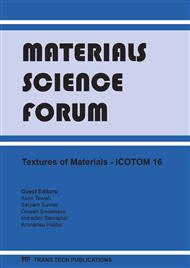p.398
p.402
p.406
p.411
p.415
p.419
p.427
p.435
p.439
Practical Aspects of Texture Analysis in the Aluminum Industry
Abstract:
Crystallographic texture analysis is a microstructure characterization technique essential for relating microstructure attributes to the anisotropy of properties in crystalline matter. As such, it is widely used in research as well as in industrial materials and process design. Additionally, texture analysis is also used in industrial applications to monitor the consistency of a process for e.g. the anisotropy in mechanical properties from product to product. This overview outlines the reduction of quantitative texture data for the use in industrial settings.
Info:
Periodical:
Pages:
415-418
Citation:
Online since:
December 2011
Authors:
Keywords:
Price:
Сopyright:
© 2012 Trans Tech Publications Ltd. All Rights Reserved
Share:
Citation:


